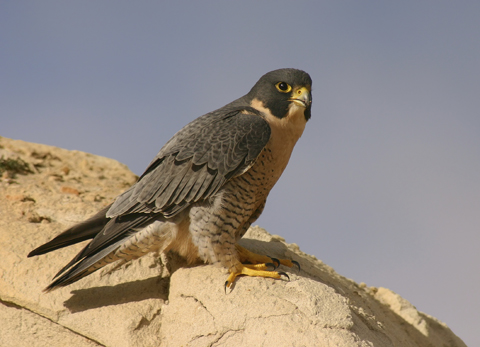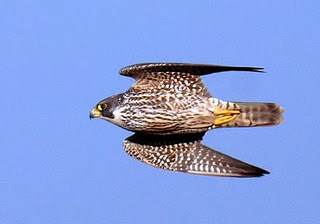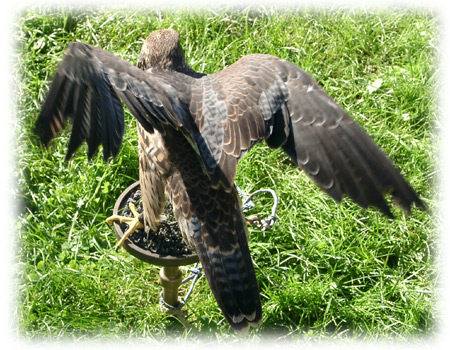The peregrine falcon is the fastest animal on earth. When not hunting, this bird generally flies between 40 and 60 mph. However, when diving to catch its prey, the peregrine falcon can reach speeds of up to 220 mph. What allows it to reach such high speeds when other birds cannot? The peregrine falcon has many features that set it apart from other birds, making it one of the deadliest predators out there. These features are its keel, pointed wings, stiff feathers, and incredibly efficient respiratory and circulatory systems.

A bird’s keel is a bone specialized for flight, a modified breastbone. A birds muscles for flapping are attached to its keel. The peregrine falcon has a very large keel, allowing more muscle to be attached to it and in turn more flapping power to be generated.

The peregrine falcon’s pointed wings also help the bird reach its mind-boggling speeds. The wings are swept back and contributed to the bird’s streamlined figure. “The curved wings create an air foil effect in multiple dimensions, maximizing maneuverability, lift, and speed” (Harker Bio).

The feathers of the peregrine falcon also contribute to its high speeds. The feathers are slim and stiff, reducing the drag that can be caused by loose limp feathers.
The peregrine falcon appears extremely aerodynamic, but if it were not for its incredibly efficient respiratory and circulatory systems, it would not be able to reach the speeds it does. The peregrine falcon can breathe effortlessly at speeds of over 200 mph while “Other birds can’t even breathe when flying at speeds half as fast” (Horton). The peregrine falcon can do this because it has a one-way air flow into its lungs. The peregrine falcon has air sacs that keep its lungs inflated even when exhaling. The peregrine falcon also has a very strong heart that beats between 600 and 900 times per minute, allowing the oxygen to travel throughout the bird at high rates so it does not fatigue quickly. The amazing speed of its heartbeat allows the peregrine falcon to flap its wings up to four times per second, contributing to its speed.
Sources:
- How do peregrine falcons fly so fast?, by J. Horton
- Fernbank Science Center’s ornithology web, on skeletons of birds
- How do peregrine falcons fly so fast? on Boddunan.com
- The Peregrine Falcon: Fastest Animal on the Planet, on Harker Bio
- Falcon facts, on Raptor Resource Project
- Peregrine falcon, on the themodernapprentice.com
- Peregrine falcon, on sheppardsoftware.com
One Comment
Lorena Barba posted on December 12, 2011 at 10:59 pm
It is really an amazing animal … great info about its powerful respiratory system and heart!
Are the images taken from the sites you listed in your source list? I think it would be nice to add a caption.